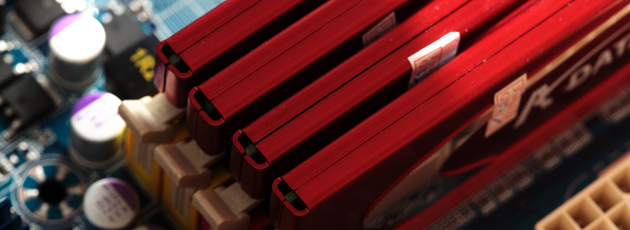When I used to teach high school, I would describe RAM (Random Access Memory or simply “memory”) as physical desk space, and virtual memory as putting stuff on the floor. So, stuff on your desk (RAM) is the stuff you can access right away, and when the desk is full, you have to put your stuff on the floor (the hard drive) which takes longer to get. Since all hard drives are slower than RAM, it’s always good to have plenty of RAM.
Over the years I have found it is pretty rare to find memory defects, but when they do exist, your system can become incredibly erratic. Having faulty RAM can cause your system to give you BSODs, lock up inexplicably with no warnings or error prompts, restart endlessly in a loop, not boot at all and can even cause a loss of data if you are able to run the system and a piece of software is attempting to access the faulty area(s) of RAM. I am not necessarily suggesting you purchase ECC (Error-Correcting Code) RAM, but I am suggesting that you take the time to test your RAM at least once — and test it the right way.
What’s the right way to test your RAM? I suggest using Microsoft’s own “Windows Memory Diagnostic” [vghz perma-link, ISO] utility. Once you have made your boot disc or floppy disk and the memory test has begun, you must tell Windows Memory Diagnostic to run extended tests by pressing the T key. Yes, it will take longer, but it’s time well spent. Let it run at least 10 passes, if there are no failures or errors, then you know it’s good to go.
Several years ago, I was having a very difficult time with a system. It was running WindowsME and was a catastrophe. I formatted it and installed WindowsXP and it ran for a brief period of time, after three or four reboots, however, it was back to inconsistently crashing for no evident reason. I suspected the power supply, the motherboard, and then finally performed an extended memory test. 121 errors detected. Notice how these errors are part of the extended tests only? The basic tests would have said the RAM is just fine!
You can use this tool to weed out a bad memory stick. Just because it flags errors doesn’t mean that every memory stick is bad. Take out all the RAM and put in one stick at a time and test and re-test until you determine which sticks are bad.
Finally, when you determine a stick is bad, get rid of it; I don’t happen to know of any way to fix a bad memory module. If you do, comment below.
admin@variableghz.com


No Comments